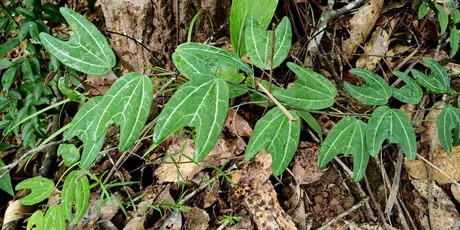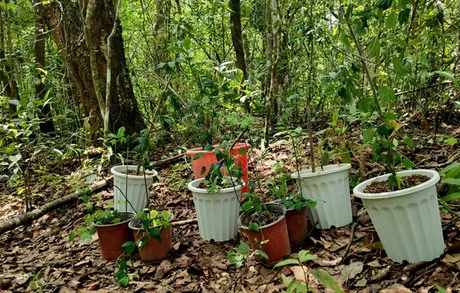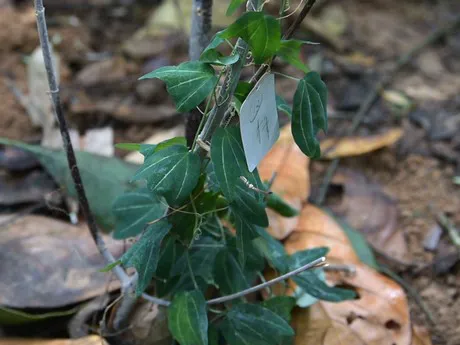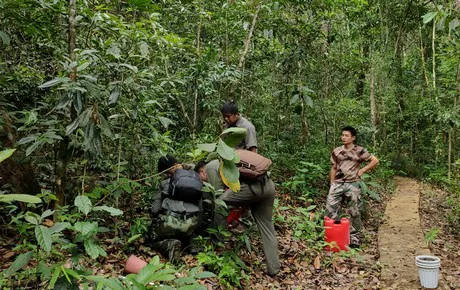60 individuals of critically endangered plant species named Passiflora xishuangbannaensis were reintroduced to the wild last week at Mengyang Nature Reserve in Xishuangbanna, China.
The plant individuals were released in partnership with Xishuangbanna National Nature Reserve Administration.

Passiflora xishuangbannaensis in its natural habitat
Passiflora xishuangbannaensis has only been known to the scientific community since 2005. It is a passion flower vine endemic to Yunnan and only found within Xishuangbanna.

Passiflora xishuangbannaensis propagated by XTBG researchers
Passiflora xishuangbannaensis is distinguished from other members of Passiflora supersection Disemma by being completely glabrous, having one to two flowers per node, thickened coronal filaments that are brown to purple at the base, deeply bilobed leaves with strong variegation along the three primary veins, and a v-shaped arrangement of numerous abaxial laminar nectaries.

Passiflora xishuangbannaensis reintroduced to the wild
During a field survey in 2015, fewer than 100 individuals were found by XTBG researchers. Their habits are under human disturbance. Its conservation status was considered as critically endangered.

XTBG researchers prepare for reintroducing Passiflora xishuangbannaensis to the wild at Mengyang.
To protect the passion flower vine, XTBG researchers propagated Passiflora xishuangbannaensis and have got 200 individuals.
60 individuals were reintroduced to the wild on August 21. XTBG will carry out further monitoring and study to get a high ratio of reintroduction success.

Reintroduction work at Mengyang
For more information: Xishuangbanna Tropical Botanical Garden
Xishuangbanna Tropical Botanical Garden
Chinese Academy of Sciences
Menglun, Mengla, Yunnan 666303, China
english.xtbg.cas.cn
